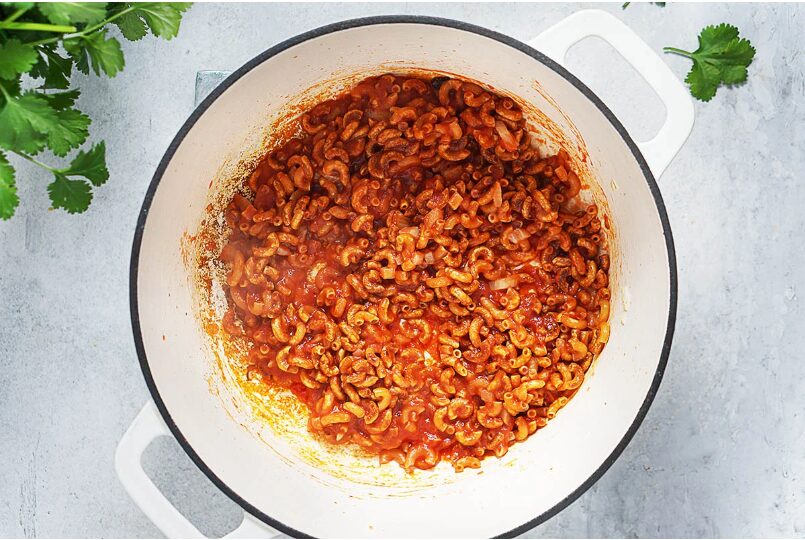Introduction
Sopita, a beloved staple in many households, is more than just a simple soup. It embodies comfort, tradition, and the rich culinary heritage of Latin America. This article explores the history, variations, health benefits, and cultural significance of sopita, aiming to attract and engage food enthusiasts and home cooks alike.
The History of Sopita
Sopita, derived from the Spanish word for “little soup,” has its roots in the culinary traditions of Latin American countries such as Mexico, Cuba, and Puerto Rico. It typically features small pasta shapes cooked in a flavorful broth, often enhanced with vegetables, meat, or spices. The dish is cherished for its simplicity, versatility, and ability to provide warmth and nourishment.
Historically, sopita was a way to make use of leftover ingredients and stretch meals for larger families. Over time, it has evolved into a cherished comfort food, with each region and household adding its own unique touch.
Variations of Sopita
One of the joys of sopita is its versatility. There are countless variations, each with its own distinctive flavor and ingredients. Here are some popular versions:
Sopita de Fideos: Sopita de fideos is perhaps the most common variation. It features thin, short noodles (fideos) cooked in a tomato-based broth. This version often includes vegetables like carrots, peas, and potatoes, and can be enriched with chicken or beef for added protein.
Sopita de Letras: A favorite among children, sopita de letras uses alphabet-shaped pasta. This playful version is often served with a simple tomato broth and can be a fun and educational meal for young eaters.
Sopita de Conchas: Sopita de conchas uses small shell-shaped pasta, which holds the broth beautifully. This variation is often made with a chicken or beef broth and can be enhanced with vegetables and herbs for added flavor.
Sopita de Arroz
For a different take, sopita de arroz substitutes rice for pasta. This version is heartier and can be flavored with chicken, vegetables, and spices, making it a comforting and satisfying meal.
Health Benefits of Sopita: Sopita is not only delicious but also offers several health benefits, making it a wholesome choice for any meal:
Nutrient-Rich Ingredients: Sopita can be packed with nutrient-rich ingredients like vegetables, lean meats, and whole grains. Carrots, peas, and potatoes add vitamins and minerals, while chicken or beef provide essential proteins and amino acids.
Hydration and Digestion: The broth in sopita helps with hydration and is easy on the digestive system. It can be particularly soothing for those recovering from illness or seeking a light, comforting meal.
Low-Calorie Option: Depending on the ingredients used, sopita can be a low-calorie option suitable for those watching their weight. Opting for lean meats and a variety of vegetables can keep the dish healthy and balanced.
Cultural Significance: Sopita holds a special place in the hearts of many families, often evoking memories of childhood and home-cooked meals. It is a dish that brings people together, whether it’s a simple weeknight dinner or a special family gathering. The cultural significance of sopita extends beyond its role as a meal; it represents tradition, family bonds, and the comfort of familiar flavors.
In many Latin American households, sopita is one of the first dishes children learn to cook, passing down culinary traditions from one generation to the next. It is also commonly served during holidays and celebrations, highlighting its role as a symbol of warmth and togetherness.
Making Sopita at Home
Creating sopita at home is a straightforward process that can be customized to suit individual tastes and dietary preferences. Here is a basic recipe to get you started:
Ingredients
- 1 cup small pasta (fideos, alphabet, shells, or rice)
- 1 tablespoon olive oil
- 1 medium onion, finely chopped
- 2 cloves garlic, minced
- 1 medium carrot, diced
- 1 medium potato, diced
- 1 can (15 oz) diced tomatoes
- 4 cups chicken or vegetable broth
- 1 teaspoon cumin
- Salt and pepper to taste
- Fresh cilantro or parsley for garnish
Instructions
Heat the Oil: In a large pot, heat the olive oil over medium heat. Add the chopped onion and minced garlic, and sauté until the onion becomes translucent.
Add Vegetables: Stir in the diced carrot and potato, and cook for another 5 minutes until they begin to soften.
Incorporate Tomatoes and Broth: Add the diced tomatoes (with their juice), broth, cumin, salt, and pepper. Bring the mixture to a boil.
Cook Pasta: Add the pasta to the pot. If using rice, add it at this stage as well. Reduce the heat to a simmer and cook until the pasta (or rice) and vegetables are tender, about 10-12 minutes.
Adjust Seasoning: Taste the sopita and adjust the seasoning as needed. If the soup is too thick, you can add more broth or water to reach the desired consistency.
Serve: Ladle the sopita into bowls and garnish with fresh cilantro or parsley. Serve hot and enjoy!
Conclusion
Sopita is a timeless dish that offers comfort, nourishment, and a taste of tradition. Its versatility and simplicity make it a favorite in many households, while its rich history and cultural significance add depth to every bowl. Whether you’re making sopita de fideos, sopita de letras, or another variation, this beloved soup is sure to bring warmth and joy to your table. By sharing the story and recipes of sopita, we hope to inspire others to explore this classic comfort food and create lasting memories with each delicious spoonful.




